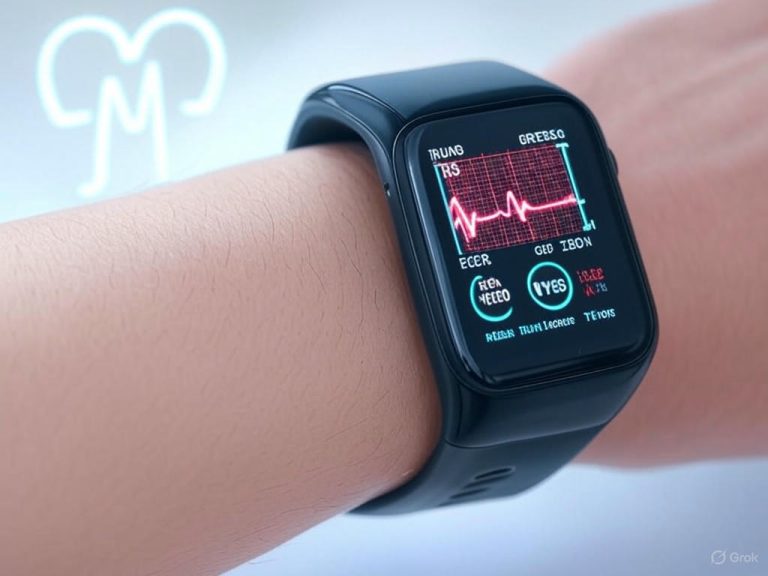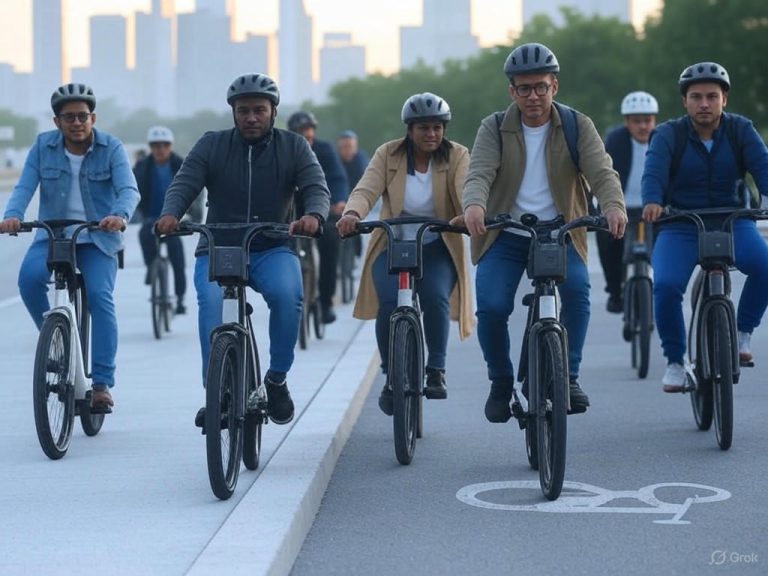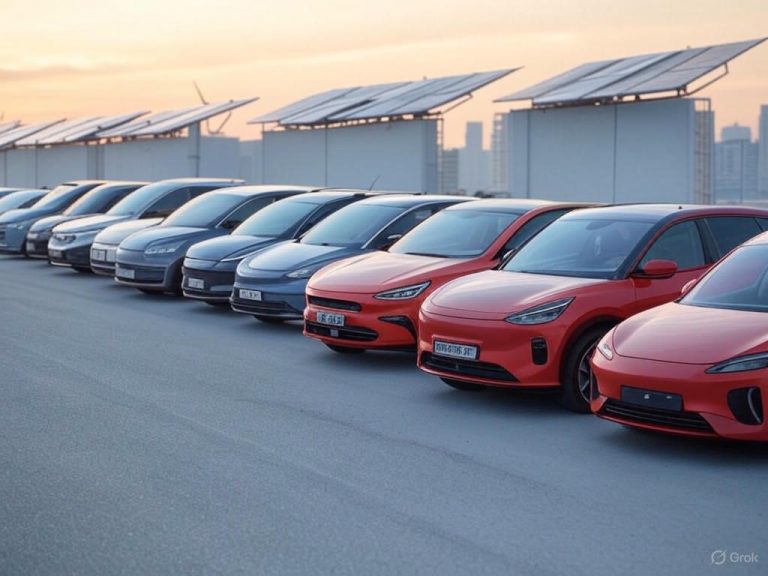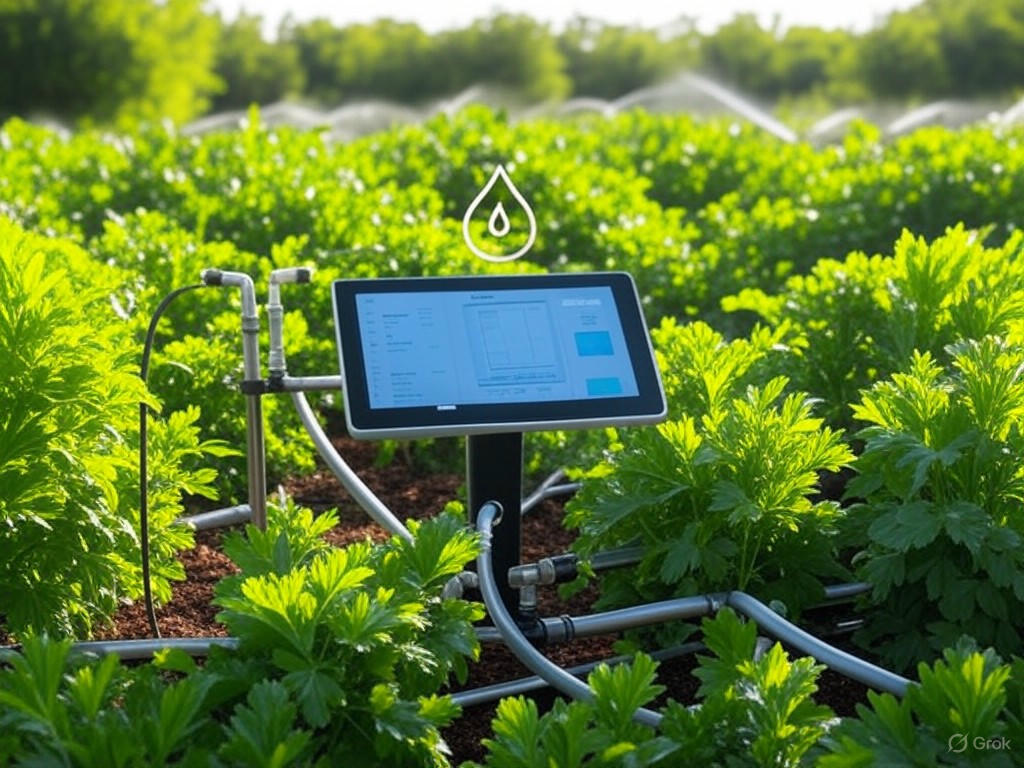
Top 5 Smart Irrigation Systems Saving Water Efficiently in 2025
- Introduction: Why Smart Irrigation Systems Matter for Water Conservation in 2025
- Introduction: Why Smart Irrigation Systems Matter for Water Conservation in 2025
- The Critical Need for Water Conservation
- What Are Smart Irrigation Systems?
- Why These Systems Are Game-Changers for Water Conservation
- Selection Criteria for the Top Smart Irrigation Systems in 2025
- Conclusion: Key Takeaways and Choosing the Right Smart Irrigation System for Your Needs
- Conclusion: Key Takeaways and Choosing the Right Smart Irrigation System for Your Needs
- Standout Features, Strengths, and Limitations of Top Systems
- Matching Systems to Your Needs: Property Size, Budget, and Technical Proficiency
- The Importance of Professional Installation
- Smart Irrigation’s Expanding Role in Sustainable Water Management and Future Trends
- 1. Rachio 3 Smart Sprinkler Controller: The Benchmark for Customizable and Efficient Irrigation
- 1. Rachio 3 Smart Sprinkler Controller: The Benchmark for Customizable and Efficient Irrigation
- Technical Specifications and Installation
- Advanced Weather Intelligence and Integration
- App Interface and User Experience
- Performance and Water Savings
- Limitations and Considerations
- Summary
- 2. Orbit B-hyve Smart Sprinkler Controller: Best Value for Smaller Yards and Budget-Conscious Users
- Orbit B-hyve Smart Sprinkler Controller: Best Value for Smaller Yards and Budget-Conscious Users
- Technical Specifications and Connectivity
- Weather-Adaptive Scheduling and Local Data Use
- App Usability: A Mixed Experience
- Durability and Long-Term Considerations
- Affordability and Practical Suitability
- 3. Hunter Hydrawise HPC-400: The Most Scalable and Expandable Solution for Complex Systems
- Hunter Hydrawise HPC-400: The Most Scalable and Expandable Solution for Complex Systems
- Modular Design and Technical Specifications
- Unique Features: Soil Moisture Monitoring and Weather Integration
- Practical Installation Scenarios and Water Savings
- Strengths and Weaknesses
- Conclusion
- 4. Moen Smart Sprinkler Controller: Emerging Contender with Strong Voice Assistant Integration
- 4. Moen Smart Sprinkler Controller: Emerging Contender with Strong Voice Assistant Integration
- Voice Assistant Integration and Scheduling Intelligence
- Technical Specifications and App Features
- Comparison to Rachio and Hunter
- User Experience: Setup, Water Conservation, and Responsiveness
- Potential for Growth and Innovation
- 5. AgriLynk Smart Irrigation Control System: Optimal for Agricultural-Scale Water Conservation
- 5. AgriLynk Smart Irrigation Control System: Optimal for Agricultural-Scale Water Conservation
- Technical Foundations: Sensors, IoT Connectivity, and Data Analytics
- Data-Driven Irrigation Decision-Making and Labor Savings
- Agricultural-Scale Impact Compared to Residential Systems
- Key Takeaways
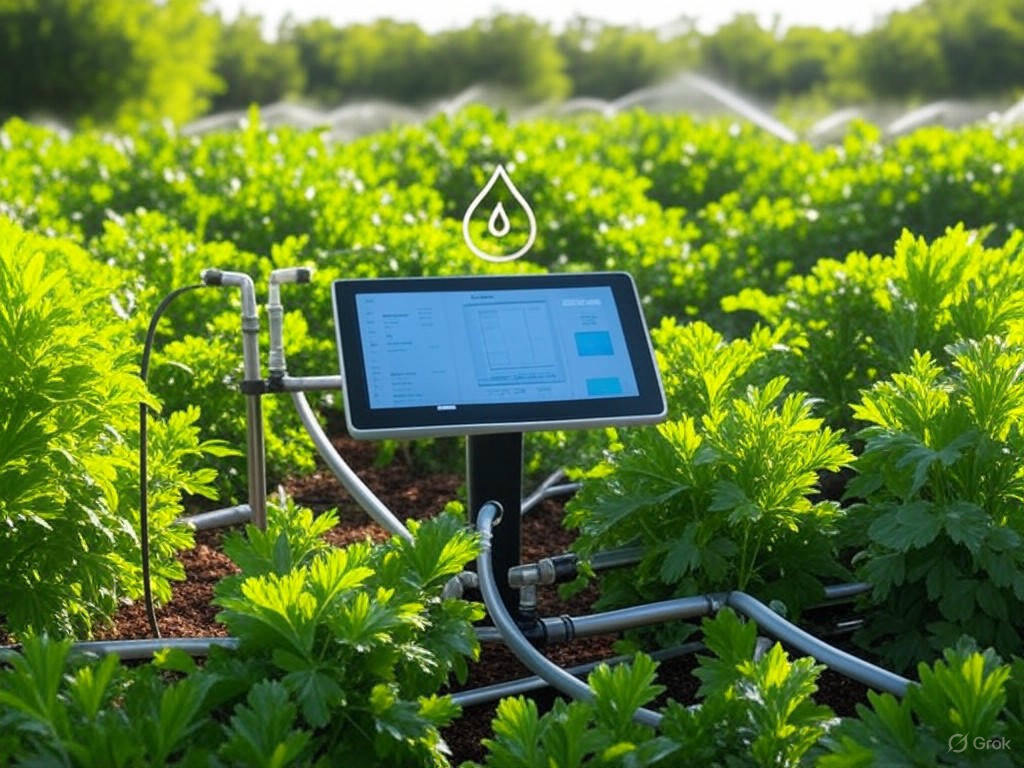
Introduction: Why Smart Irrigation Systems Matter for Water Conservation in 2025
Introduction: Why Smart Irrigation Systems Matter for Water Conservation in 2025
Water scarcity is no longer a distant concern—it is an urgent global crisis. By 2025, approximately half of the world’s population will reside in water-stressed regions, with 1.8 billion people facing absolute water scarcity. This escalating shortage is projected to displace around 700 million individuals by 2030. Drought conditions have become increasingly widespread, from persistent dry spells in the U.S. Midwest to severe water stress affecting ecosystems worldwide. These challenges threaten food security, livelihoods, and natural habitats, underscoring the critical need for efficient water management.
The Critical Need for Water Conservation
Environmental data reinforces the severity of this issue. Global temperatures have risen 1.6°C above pre-industrial levels, accelerating glacier melt and disrupting rainfall patterns. In late 2024, nearly half of the contiguous United States experienced drought conditions, with 43% of the Midwest under moderate to severe drought and an additional 25% classified as abnormally dry. These patterns are not isolated but part of a global trend jeopardizing agriculture, biodiversity, and human well-being.
Water conservation is fundamental—not just an environmental ideal but a necessity to sustain agriculture and urban living. Droughts reduce crop yields significantly, driving up food prices and threatening food availability. Furthermore, water shortages trigger cascading economic, environmental, and social consequences, including habitat loss, elevated public health risks, and growing social tensions.
What Are Smart Irrigation Systems?
Smart irrigation systems offer a practical, technology-driven solution to these pressing water challenges. Unlike traditional irrigation that relies on fixed schedules, smart systems use real-time environmental data—such as soil moisture levels, localized weather forecasts, and evapotranspiration rates—to dynamically adjust watering. This precision watering avoids over-irrigation, reduces runoff, and ensures plants receive water only when necessary.
Key technologies powering these systems include:
- Soil moisture sensors that monitor water availability in the root zone.
- Weather integration using hyper-local forecasts and rain sensors to suspend irrigation during rain or freeze events.
- Flow and pressure sensors that optimize water delivery and detect leaks.
- Automated controllers accessible via mobile apps or smart home platforms like Amazon Alexa and Google Assistant.
For instance, the Rachio 3 Smart Sprinkler Controller leverages real-time weather intelligence to tailor watering schedules, achieving water savings without compromising turf health. It supports up to 16 irrigation zones and offers seamless integration with smart home ecosystems, enabling remote monitoring and precise manual adjustments for user convenience.
Why These Systems Are Game-Changers for Water Conservation
Smart irrigation systems transcend convenience; they deliver measurable water savings and promote sustainability. Independent studies and extensive field tests consistently demonstrate water use reductions of 20–30% compared to conventional irrigation. A notable solar-powered smart irrigation system designed for urban agriculture achieved over 28% reductions in both water and energy consumption, illustrating the potential for substantial resource savings.
Beyond environmental benefits, smart irrigation systems offer economic advantages. Reduced water bills and irrigation costs often enable these systems to pay for themselves within a few years. Automation also minimizes human error—a common cause of water waste in manual irrigation setups—further enhancing efficiency and cost-effectiveness.
Selection Criteria for the Top Smart Irrigation Systems in 2025
Selecting the best smart irrigation systems requires balancing cutting-edge technology with proven real-world performance. Our top five picks were evaluated based on:
- Technical Innovation: Integration of advanced sensors, AI-driven watering algorithms, and energy-efficient designs.
- Water Savings Efficiency: Verified water use reductions supported by independent tests and user feedback.
- Smart Home Compatibility: Smooth interoperability with major platforms such as Amazon Alexa, Google Assistant, Apple HomeKit, and mobile applications.
- User Experience: Intuitive interfaces, straightforward installation, and responsive customer support.
- Scalability: Adaptability for a range of property sizes—from small residential yards to larger commercial landscapes—with modular expandability.
- Reliability: Demonstrated sensor accuracy, system uptime, and durability across diverse environmental conditions, validated by recent field trials and consumer reports.
Our approach prioritizes systems that consistently deliver practical water savings and ease of use over marketing hype. The goal is to recommend solutions that homeowners and property managers can trust to conserve water effectively while maintaining healthy, vibrant landscapes.
As global water scarcity intensifies, adopting smart irrigation technology is no longer optional but essential for responsible water stewardship. The following top smart irrigation systems combine state-of-the-art technology with dependable real-world performance, charting a path toward smarter, more sustainable watering practices in 2025 and beyond.
| Selection Criteria | Description |
|---|---|
| Technical Innovation | Integration of advanced sensors, AI-driven watering algorithms, and energy-efficient designs. |
| Water Savings Efficiency | Verified water use reductions supported by independent tests and user feedback. |
| Smart Home Compatibility | Smooth interoperability with major platforms such as Amazon Alexa, Google Assistant, Apple HomeKit, and mobile applications. |
| User Experience | Intuitive interfaces, straightforward installation, and responsive customer support. |
| Scalability | Adaptability for a range of property sizes—from small residential yards to larger commercial landscapes—with modular expandability. |
| Reliability | Demonstrated sensor accuracy, system uptime, and durability across diverse environmental conditions, validated by recent field trials and consumer reports. |
Conclusion: Key Takeaways and Choosing the Right Smart Irrigation System for Your Needs
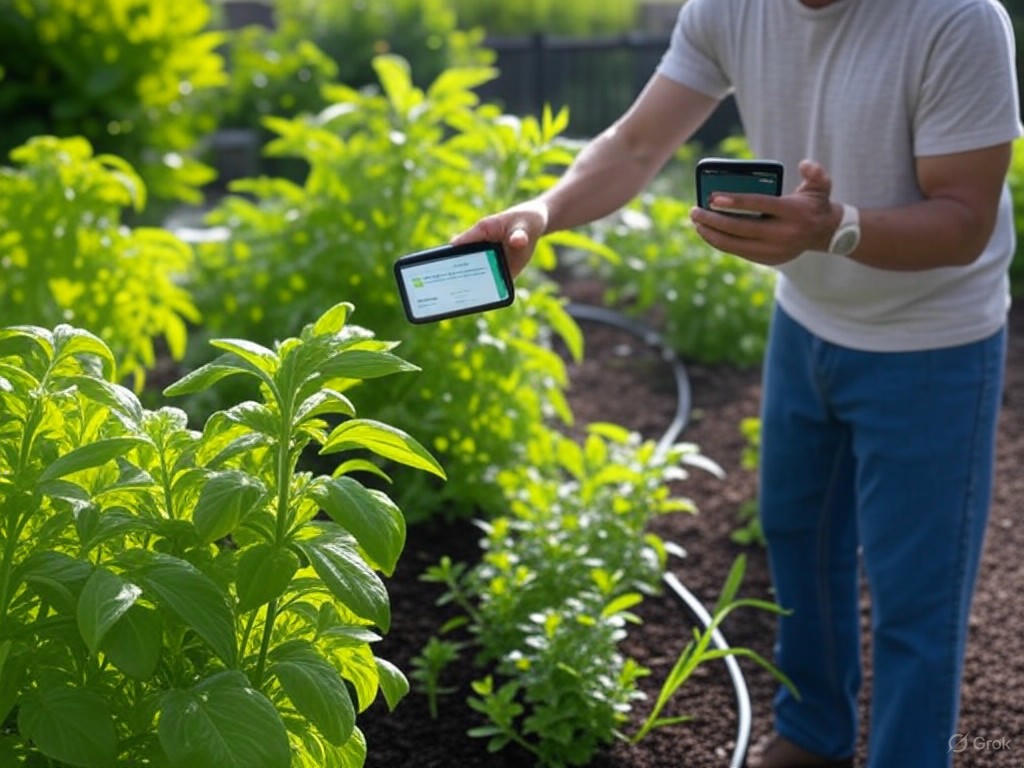
Conclusion: Key Takeaways and Choosing the Right Smart Irrigation System for Your Needs
Smart irrigation technology in 2025 presents a broad spectrum of solutions designed to fit varying property sizes, budgets, and technical expertise levels—all aimed at a critical shared objective: conserving water effectively while maintaining healthy lawns and gardens. After thorough evaluation of the leading systems, it’s clear that no single product is flawless. However, each top contender brings distinct advantages that contribute significantly to efficient water use.
Standout Features, Strengths, and Limitations of Top Systems
-
Rachio 3 Smart Sprinkler Controller
The Rachio 3 continues to set the benchmark by expertly balancing advanced technical capabilities with a user-friendly design. Supporting up to 16 zones, it dynamically adjusts watering schedules in real time using hyperlocal weather data and soil moisture inputs, resulting in substantial water savings—up to 50% reduction reported in typical residential use. Its intuitive, feature-rich app offers granular zone customization, appealing to novices and professionals alike. The system’s seamless integration with major smart home platforms—including Amazon Alexa, Google Assistant, Apple HomeKit, and SmartThings—enhances automation and voice control. Its higher upfront cost and dependency on stable Wi-Fi connectivity, along with a learning curve for full feature utilization, are factors to consider. -
Orbit B-hyve XR
Orbit B-hyve XR shines as a cost-conscious choice tailored for smaller yards, with 4- or 8-zone models that are easy to install and operate. Utilizing WeatherSense technology, it proactively adjusts watering based on local weather forecasts, though it lacks soil moisture sensor integration. The app is functional but less polished compared to Rachio’s, with occasional connectivity hiccups reported. Its straightforward feature set and affordability make it ideal for budget-minded users who need reliable water savings without complex customization. -
Hunter Hydrawise HPC-400
Hunter’s Hydrawise HPC-400 stands out for its modular scalability, supporting expansions from 4 to 16 zones via add-on modules, perfect for larger or more complex landscapes. Featuring advanced Predictive Watering™ technology and compatibility with soil moisture sensors, it offers precise irrigation control based on real-time weather and soil data. The system integrates with the Hydrawise platform, supports Amazon Alexa and Control4, and provides detailed diagnostics through built-in milliamp sensors. While offering professional-grade control, it may be overengineered for small residential properties and comes with a steeper installation and learning curve. -
Moen Smart Sprinkler Controller
Moen’s controller is an emerging option with strong voice assistant integration via Amazon Alexa and Google Assistant, enabling convenient hands-free irrigation management. Available in 8- and 16-zone models, it features intelligent scheduling that adapts to weather conditions, although its weather intelligence is less mature than Rachio’s. The app supports basic zone control but lacks family sharing and on-device manual controls, which could limit usability during network disruptions. Moen is continuously evolving, making it a promising system to watch as updates improve functionality and ecosystem compatibility. -
Rain Bird ARC8
The Rain Bird ARC8 offers a WaterSense-certified, straightforward smart controller that delivers reliable basic smart irrigation features. While it doesn’t lead in innovation or app sophistication, its simplicity and dependability make it a solid choice for users seeking a no-frills smart controller without advanced customization or integration.
Matching Systems to Your Needs: Property Size, Budget, and Technical Proficiency
Selecting the right smart irrigation system depends on aligning system capabilities with your specific requirements:
-
Small yards or tight budgets:
Orbit B-hyve XR is the top recommendation. Its 4- or 8-zone capacity fits smaller properties well, and its affordability makes smart irrigation accessible. Be prepared for a less refined app experience and fewer advanced features. -
Medium to large properties with diverse watering zones:
Rachio 3 and Hunter Hydrawise HPC-400 stand out. Rachio offers excellent app usability and broad smart home integration, while Hunter’s modular system allows physical expansion and advanced soil moisture sensing—ideal for complex landscapes or commercial applications. -
Technical proficiency and smart home ecosystem integration:
Rachio 3 leads with comprehensive compatibility across Alexa, Google Home, Apple HomeKit, and other platforms, paired with a modern, intuitive app. Moen provides strong voice assistant support but currently lags in multi-user access and app sophistication. Rain Bird offers basic integration suitable for straightforward setups. -
Installation preference: DIY vs. professional:
Although these controllers promote DIY installation, professional setup is highly advisable, especially for larger or uneven properties. Licensed installers ensure optimal sensor placement, wiring, zone configuration, and integration with local weather data, which are critical for maximizing water savings and system reliability.
The Importance of Professional Installation
Professional installation goes beyond convenience—it is essential for achieving the full potential of smart irrigation systems. Expert installers bring precision in:
- Evaluating terrain, soil types, and sun exposure
- Designing efficient irrigation layouts that minimize runoff and overspray
- Correctly calibrating sensors to local environmental conditions
- Integrating controllers with home networks and smart ecosystems
Improper installation can lead to water waste, inconsistent irrigation, and diminished system lifespan. While professional installation adds upfront cost, it typically results in greater water savings, healthier landscapes, and lower maintenance over time, ultimately providing better return on investment.
Smart Irrigation’s Expanding Role in Sustainable Water Management and Future Trends
Smart irrigation is more than a convenience—it is a vital tool in responsible water stewardship amid escalating global water scarcity. By harnessing real-time weather data, evapotranspiration (ET) sensors, and soil moisture analytics, these systems reduce water waste by 20–60%, a substantial improvement over traditional irrigation methods that can lose up to 60% of applied water through runoff and evaporation.
Looking forward, expect continued integration of AI-driven automation and IoT connectivity to refine precision watering. Emerging technologies will enable predictive irrigation schedules that respond dynamically to plant needs and environmental conditions.
Additionally, landscaping trends emphasizing low-maintenance designs, native plants, and biodiversity-friendly gardening complement these technologies by lowering overall water demand.
Together, smart irrigation systems and sustainable landscaping are shaping the future of eco-conscious gardening—where technology and environmental responsibility coalesce to optimize water use efficiently.
For homeowners ready to make the transition, investing in a carefully selected smart irrigation controller paired with professional installation is a pragmatic step toward reducing water bills and contributing to broader environmental conservation goals.
Whether your priority is budget, scalability, or seamless smart home integration, the systems reviewed here represent the best smart irrigation technology available in 2025. The key to unlocking meaningful water savings lies in matching system features to your property’s unique demands and committing to proper installation and setup. As these technologies mature, smart irrigation will become indispensable in sustainable gardening and water management practices worldwide.
| System | Zones | Key Features | Smart Home Integration | Strengths | Limitations | Best For |
|---|---|---|---|---|---|---|
| Rachio 3 Smart Sprinkler Controller | Up to 16 | Dynamic scheduling with hyperlocal weather & soil moisture, granular zone customization, feature-rich app | Amazon Alexa, Google Assistant, Apple HomeKit, SmartThings | Advanced features, excellent app usability, broad integration | Higher upfront cost, requires stable Wi-Fi, learning curve | Medium to large properties, tech-savvy users, smart home ecosystems |
| Orbit B-hyve XR | 4 or 8 | WeatherSense technology adjusts watering based on local weather forecasts | Basic app, limited smart home integration | Affordable, easy installation, good for smaller yards | No soil moisture sensors, less polished app, occasional connectivity issues | Small yards, budget-conscious users |
| Hunter Hydrawise HPC-400 | 4 to 16 (modular) | Predictive Watering™ technology, soil moisture sensor compatible, detailed diagnostics | Amazon Alexa, Control4 | Highly scalable, professional-grade control, advanced diagnostics | Complex installation, steeper learning curve, may be overengineered for small properties | Large or complex landscapes, commercial use, advanced users |
| Moen Smart Sprinkler Controller | 8 or 16 | Intelligent weather-adaptive scheduling, voice assistant integration | Amazon Alexa, Google Assistant | Strong voice control, evolving platform | Less mature weather intelligence, basic app lacking family sharing, no manual controls | Users wanting voice control, evolving tech enthusiasts |
| Rain Bird ARC8 | Basic zone count (not specified) | WaterSense-certified, reliable basic smart irrigation features | Basic integration | Simple, dependable, WaterSense certified | Limited advanced features, basic app and integration | Users needing straightforward, no-frills smart controller |
1. Rachio 3 Smart Sprinkler Controller: The Benchmark for Customizable and Efficient Irrigation
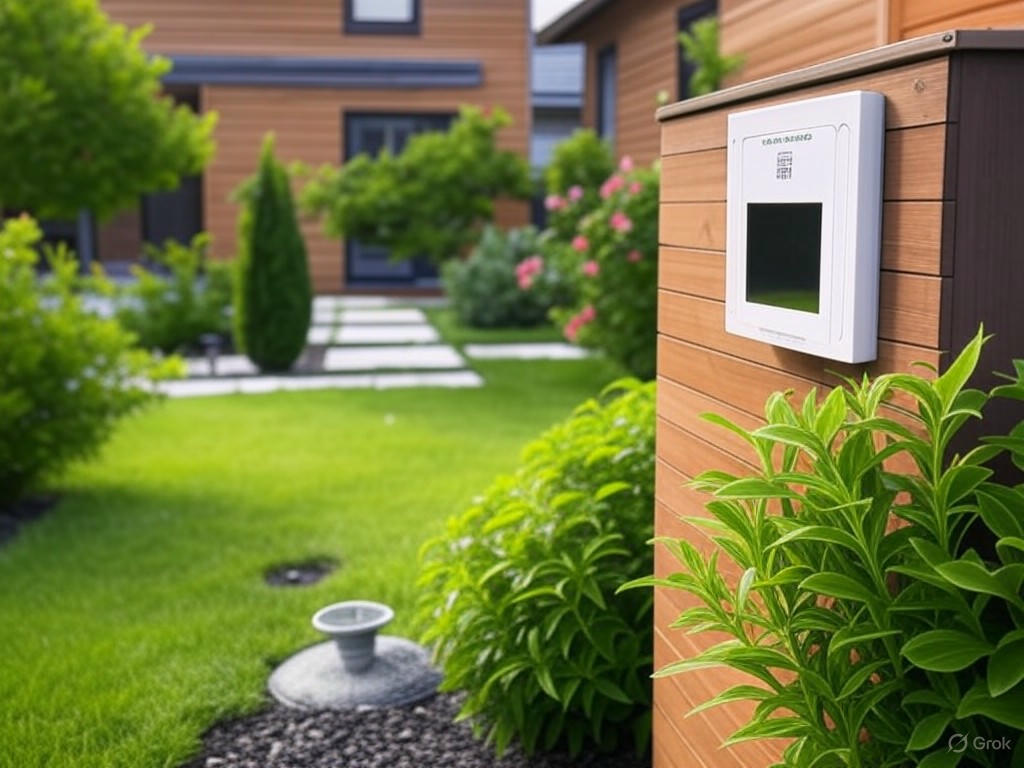
1. Rachio 3 Smart Sprinkler Controller: The Benchmark for Customizable and Efficient Irrigation
The Rachio 3 Smart Sprinkler Controller stands out in 2025 as a leading choice for smart irrigation, expertly combining advanced technical capabilities with sophisticated weather intelligence and a highly user-friendly ecosystem. Its blend of customization and water-saving technology makes it ideal for homeowners committed to efficient and responsible lawn care.
Technical Specifications and Installation
Rachio 3 offers versatile models to accommodate a wide range of yard sizes, supporting 4, 6, 8, 12, or 16 irrigation zones. This scalability enables homeowners to create finely tuned watering schedules tailored to diverse plant types and landscape sections—functionality often missing in simpler controllers.
Key specifications include:
- Power: Requires connection to the included AC power adapter; note that it lacks battery backup, so uninterrupted power supply is necessary.
- Connectivity: Supports dual-band Wi-Fi (2.4 GHz and 5 GHz), ensuring stable and fast network connections for reliable remote control.
- Physical Dimensions: Compact footprint measuring 9.1” x 5.5” x 1.4” and weighing just over 1 pound, fitting standard sprinkler system enclosures.
- Installation: Designed as a DIY-friendly system with easy-press connectors compatible with 14-22 gauge wiring. Typical installation takes about 30 minutes without specialized tools.
Setup and ongoing management require the Rachio mobile app, compatible with iOS 10.3+ and Android 4.4+. Importantly, Rachio does not charge monthly fees, which is a competitive advantage over some alternatives.
Advanced Weather Intelligence and Integration
A defining feature of the Rachio 3 is its proprietary Weather Intelligence™ system. This technology leverages hyperlocal weather forecasts and soil data to optimize watering schedules dynamically and precisely. Its smart features include:
- Rain Skip: Automatically suspends watering during rain events or when rain is forecasted.
- Wind Skip: Prevents watering at times of high wind to reduce water drift and evaporation.
- Saturation Skip: Monitors soil moisture levels to avoid unnecessary watering and prevent over-saturation.
Such nuanced adjustments significantly reduce water waste compared to traditional fixed-schedule irrigation and even outperform alternatives like Rain Bird or Orbit B-hyve in reliability and precision.
Rachio 3 integrates seamlessly with major smart home platforms, including:
- Amazon Alexa
- Google Assistant
- IFTTT
- SmartThings
- Alarm.com
These integrations enable voice control and automation routines that simplify daily watering management and allow hands-free operation.
App Interface and User Experience
The Rachio app is widely praised for its clean, intuitive design that balances comprehensive control with usability. Users can easily manage multiple zones, customize schedules, and access detailed watering histories without feeling overwhelmed.
Notable app features include:
- Remote start and stop of watering cycles
- System access sharing with family members or professional landscapers
- Quick Run mode for additional watering following hot or dry days
- Real-time alerts on system status and watering events
Users consistently commend the app’s responsiveness and straightforward navigation, setting it apart from competitors whose apps may feel clunky or limited.
Performance and Water Savings
Independent studies and widespread user feedback confirm that the Rachio 3 can reduce outdoor water consumption by up to 50%, equating to annual savings of 15,000 to 20,000 gallons for typical residential landscapes. These savings stem from the system’s adaptive watering based on real-time weather and soil moisture data rather than rigid preset schedules.
Reliability is a strong point; most users report stable operation and timely software updates. However, since the system depends heavily on Wi-Fi connectivity, internet interruptions can temporarily disable remote control and smart scheduling. Despite this, the controller continues to operate on manual pre-set watering cycles if programmed.
Limitations and Considerations
While the Rachio 3 excels in flexibility and features, some limitations should be noted:
- Wi-Fi Dependency: A stable internet connection is essential for full functionality, including remote access and weather-based adjustments. Areas with unreliable Wi-Fi may experience reduced convenience.
- Learning Curve: The extensive customization options and smart home integrations can be daunting for users new to smart technology or irrigation management.
- No Battery Backup: Unlike some competitors, Rachio 3 does not provide battery backup to maintain operation during power outages.
- Initial Cost: The upfront investment is higher than basic or budget models, but the long-term water savings and feature set justify the price for most users focused on efficiency.
Summary
For homeowners seeking a smart irrigation controller that offers deep customization, proven water savings, and broad smart home compatibility, the Rachio 3 Smart Sprinkler Controller sets the 2025 benchmark. Its advanced Weather Intelligence™, intuitive app, and flexible zone support deliver precise watering control and substantial resource conservation. While Wi-Fi reliance and system complexity may challenge some users, the overall value and performance position Rachio 3 as the premier smart irrigation solution this year.
| Category | Details |
|---|---|
| Models and Zones | 4, 6, 8, 12, or 16 irrigation zones |
| Power | AC power adapter required; no battery backup |
| Connectivity | Dual-band Wi-Fi (2.4 GHz & 5 GHz) |
| Dimensions | 9.1” x 5.5” x 1.4”, ~1 pound |
| Installation | DIY-friendly, easy-press connectors, compatible with 14-22 gauge wiring, ~30 minutes |
| App Compatibility | iOS 10.3+ and Android 4.4+, no monthly fees |
| Weather Intelligence Features | Rain Skip, Wind Skip, Saturation Skip using hyperlocal weather and soil data |
| Smart Home Integrations | Amazon Alexa, Google Assistant, IFTTT, SmartThings, Alarm.com |
| App Features | Remote start/stop, multi-zone management, system sharing, Quick Run, real-time alerts |
| Water Savings | Up to 50% reduction; 15,000 to 20,000 gallons annually |
| Limitations | Wi-Fi dependency, learning curve, no battery backup, higher initial cost |
2. Orbit B-hyve Smart Sprinkler Controller: Best Value for Smaller Yards and Budget-Conscious Users
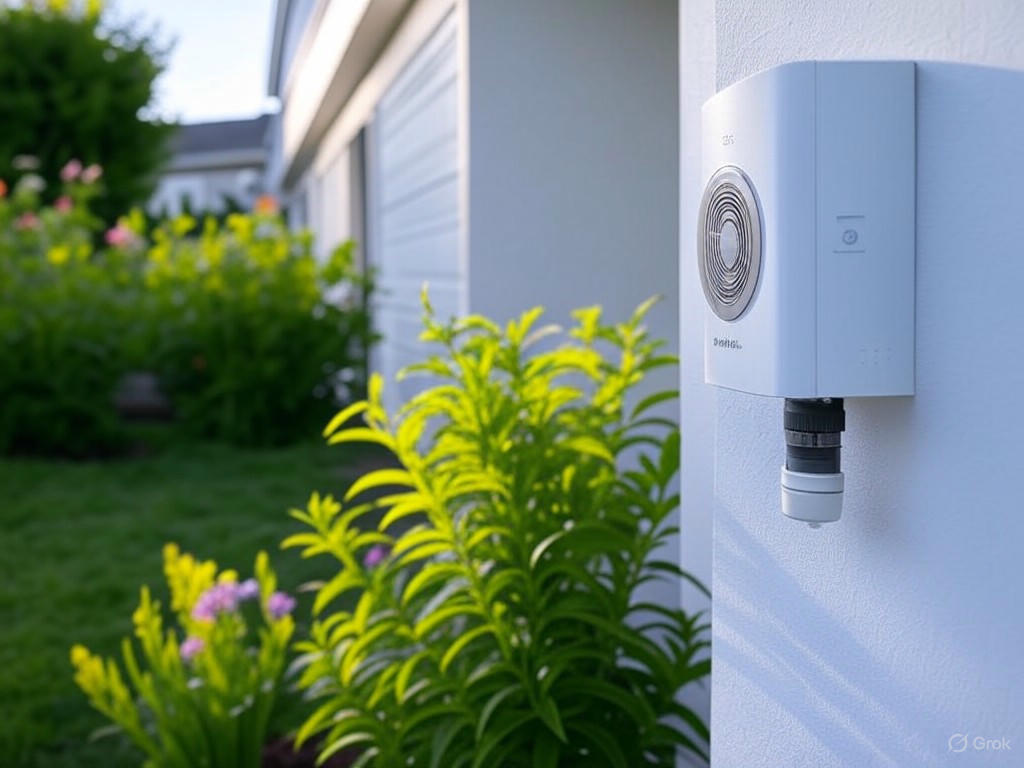
Orbit B-hyve Smart Sprinkler Controller: Best Value for Smaller Yards and Budget-Conscious Users
The Orbit B-hyve Smart Sprinkler Controller presents a practical, cost-effective solution for homeowners with smaller yards who seek reliable water conservation without the complexity or expense of premium systems. Available in 4- and 8-zone models, it is tailored to residential properties with modest irrigation needs. While it lacks the scalability of competitors like the Rachio 3—which supports up to 16 zones—the B-hyve fits well within simpler yard configurations.
Technical Specifications and Connectivity
The controller offers dual connectivity through Wi-Fi and Bluetooth, providing flexible installation options and remote control capabilities. Its hardware features a waterproof, wall-mounted panel designed for both indoor and outdoor placement, accommodating varied setup environments.
Powered by standard household electricity, the system requires no batteries, minimizing maintenance efforts. The accompanying app facilitates programming of watering zones, schedule customization, and receiving system updates remotely, enabling management whether at home or away.
Weather-Adaptive Scheduling and Local Data Use
A standout feature is Orbit’s WeatherSense technology. This system goes beyond reactive rain detection by proactively adjusting watering schedules based on detailed local weather forecasts and historical data. It can automatically skip watering when rain is expected or reduce irrigation during colder conditions, promoting efficient water use tailored to the landscape’s actual needs.
Although the B-hyve does not support granular soil moisture sensor integration found in higher-end models such as Spruce or RainMachine, WeatherSense offers a reliable foundation for water conservation in small to medium-sized yards.
App Usability: A Mixed Experience
The B-hyve app delivers essential functionality but falls short in user experience compared to competitors like Rachio and RainMachine. Users commonly report a dated and somewhat clunky interface, with occasional connectivity drop-offs requiring reconnection to Wi-Fi or Bluetooth. These interruptions can temporarily hinder scheduling and remote management.
The app’s customization options are more limited, lacking the depth of scheduling and zone control found in premium counterparts. However, it remains sufficient for straightforward sprinkler management, appealing especially to users new to smart irrigation.
Durability and Long-Term Considerations
User feedback and long-term reviews suggest that the B-hyve’s build quality is solid but not exceptional. Its waterproof casing and mounting hardware generally withstand outdoor conditions well, though some reports note wear and intermittent hardware glitches after extended use.
Orbit backs the controller with a two-year warranty, offering reasonable assurance. Prospective buyers prioritizing rugged durability for harsh environments should weigh this limitation against the controller’s affordability.
Affordability and Practical Suitability
The Orbit B-hyve’s key advantage is its competitive price point. It delivers core smart irrigation features—including weather-adaptive scheduling, voice assistant compatibility with Amazon Alexa and Google Assistant, and remote control—at a fraction of the cost of high-end alternatives.
For homeowners with smaller properties who value dependable water savings without advanced customization or premium app experiences, the B-hyve offers an excellent value proposition. Its straightforward installation and setup process make it an ideal choice for DIY enthusiasts and budget-conscious users seeking an efficient, no-frills smart sprinkler controller.
Key Takeaways:
- Designed for small to medium yards with 4- or 8-zone capacity, suitable for simpler irrigation needs.
- Supports both Wi-Fi and Bluetooth for flexible connectivity and remote management.
- WeatherSense technology uses local weather forecasts and historical data for proactive, adaptive watering.
- App interface is functional but less polished than competitors; users report occasional connectivity drop-offs.
- Durable enough for typical outdoor use but may show wear over extended periods in harsh conditions.
- Outstanding affordability makes it a strong choice for budget-conscious users prioritizing ease of use and water conservation over advanced features.
| Feature | Details |
|---|---|
| Model Options | 4-zone and 8-zone |
| Target Yard Size | Small to medium yards |
| Connectivity | Wi-Fi and Bluetooth |
| Installation | Waterproof, wall-mounted panel for indoor/outdoor |
| Power Source | Household electricity (no batteries) |
| App Features | Zone programming, schedule customization, remote updates |
| Weather Technology | WeatherSense – uses local forecasts and historical data |
| Soil Moisture Sensor Support | No |
| App Usability | Functional but dated interface; occasional connectivity drop-offs |
| Durability | Solid waterproof casing; some wear reported over time |
| Warranty | Two years |
| Voice Assistant Compatibility | Amazon Alexa and Google Assistant |
| Price | Competitive, budget-friendly |
| Ideal User | Budget-conscious, DIY, simple irrigation needs |
3. Hunter Hydrawise HPC-400: The Most Scalable and Expandable Solution for Complex Systems
Hunter Hydrawise HPC-400: The Most Scalable and Expandable Solution for Complex Systems
The Hunter Hydrawise HPC-400 distinguishes itself as the premier smart irrigation controller for users prioritizing scalability and modularity. Unlike many smart irrigation systems limited by fixed zone capacities, the HPC-400 offers a flexible, modular design that starts with a 4-station base and expands up to 16 zones via add-on modules. This adaptability makes it particularly well-suited for large residential estates, complex commercial landscapes, or properties with segmented watering demands.
Modular Design and Technical Specifications
Built on Hunter’s advanced X2™ controller platform, the HPC-400 comes Wi-Fi enabled and integrates seamlessly with the Hydrawise smart home platform. The base unit supports 4 zones, expandable through additional station modules such as the PCM-300 (3-station) and PCM-900 (9-station) modules, allowing management of up to 16 zones in total.
Key technical features include:
- Power Requirements: Operates on standard 24 VAC power, ensuring compatibility with existing irrigation infrastructure.
- Connectivity: Wi-Fi enabled for remote management via smartphone, tablet, or computer, providing real-time control.
- Integration: Compatible with Amazon Alexa for voice commands and Control4 for broader smart home automation. An open API facilitates future-proof expansion and integration with other IoT devices.
- Diagnostics: Features a built-in milliamp sensor that continuously monitors wire integrity, alerting users to faults or shorts—critical for large or complex wiring setups.
Compared to competitors, the HPC-400’s modular approach offers superior physical scalability. While the Rachio 3 features fixed 8- or 16-zone models and the Orbit B-hyve XR caps at 8 zones, neither supports incremental zone expansion. Rachio’s fixed models excel in app usability and customization, but the Hunter HPC-400 remains unmatched in adaptability for evolving or complex landscapes.
Unique Features: Soil Moisture Monitoring and Weather Integration
A standout capability of the HPC-400 is its advanced Predictive Watering™ technology. This system dynamically adjusts irrigation schedules based on real-time, hyper-local weather data, including temperature, rainfall probability, wind speed, and humidity. Such precision minimizes water waste caused by unnecessary watering, especially before rainfall.
Additionally, the HPC-400 supports detailed soil moisture monitoring through compatible sensors (sold separately). These sensors provide zone-specific moisture data, enabling irrigation decisions grounded in actual soil conditions rather than solely on weather forecasts. This granular insight is invaluable for commercial sites or large properties with variable soil profiles.
In contrast, competitors like Rachio and Orbit primarily depend on weather data combined with user-input soil types. Hunter’s integration of soil moisture sensors adds a practical, data-driven layer of accuracy that can yield substantial water savings and healthier landscapes in demanding environments.
Practical Installation Scenarios and Water Savings
While the HPC-400 offers exceptional flexibility, its installation is more involved than plug-and-play controllers like Rachio. Expanding zones requires additional wiring and potentially professional installation, especially when integrating soil moisture sensors and fully leveraging Hydrawise’s capabilities.
However, the benefits justify the complexity. Users report water savings typically ranging from 20% to 30% compared to conventional irrigation systems, aligning with EPA WaterSense certification standards and industry benchmarks. Real-time weather adjustments combined with soil moisture data help eliminate unnecessary watering cycles—a significant advantage over less sophisticated controllers.
For example, a large estate requiring 12 zones can begin with the 4-station base unit and add two PCM-300 modules for incremental expansion. This modular cost structure allows for manageable initial investment, with expansion only as needed, unlike purchasing a large fixed-zone controller upfront.
Strengths and Weaknesses
Strengths:
- Exceptional scalability: Modular expansion up to 16 zones supports complex and evolving irrigation needs.
- Advanced environmental integration: Predictive Watering™ uses real-time weather, and soil moisture sensor compatibility enhances irrigation precision.
- Robust diagnostics: Built-in milliamp sensor facilitates fault detection and reduces maintenance time.
- Comprehensive Hydrawise platform: Enables remote management, smart home integration, and detailed usage reporting.
Weaknesses:
- Greater complexity: Installation and setup require technical expertise compared to simpler competitors.
- Higher cost: Modular expansions and sensor add-ons increase total system investment.
- App interface: Hydrawise’s user interface, while functional, is less intuitive than Rachio’s streamlined app design.
Conclusion
For properties with irrigation demands beyond typical residential yards—such as large estates or commercial sites—the Hunter Hydrawise HPC-400 offers unmatched scalability and advanced features in 2025. Although it entails a steeper learning curve and higher upfront costs than alternatives like Rachio or Orbit, its data-driven precision watering delivers significant water conservation benefits at scale. Investing in the HPC-400 means gaining control over complex landscapes with reliable, smart irrigation technology that supports sustainable water management.
| Feature | Details |
|---|---|
| Base Zone Capacity | 4 zones |
| Expandable Zones | Up to 16 zones via PCM-300 (3-station) and PCM-900 (9-station) modules |
| Power Requirements | 24 VAC |
| Connectivity | Wi-Fi enabled for remote management |
| Integration | Amazon Alexa, Control4, open API |
| Diagnostics | Built-in milliamp sensor for wire integrity monitoring |
| Predictive Watering™ | Adjusts irrigation based on real-time weather data |
| Soil Moisture Monitoring | Compatible with sensors (sold separately) for zone-specific moisture data |
| Typical Water Savings | 20% to 30% |
| Installation Complexity | Higher; may require professional installation |
| Strengths | Exceptional scalability, advanced environmental integration, robust diagnostics, comprehensive Hydrawise platform |
| Weaknesses | Greater complexity, higher cost, less intuitive app interface |
4. Moen Smart Sprinkler Controller: Emerging Contender with Strong Voice Assistant Integration
4. Moen Smart Sprinkler Controller: Emerging Contender with Strong Voice Assistant Integration
Moen’s Smart Sprinkler Controller is steadily carving out its place in the smart irrigation landscape by emphasizing seamless voice assistant compatibility and adaptive scheduling. While it currently trails established leaders like Rachio and Hunter in feature richness and ecosystem maturity, it offers a compelling choice for users deeply integrated into Amazon Alexa and Google Assistant platforms.
Voice Assistant Integration and Scheduling Intelligence
A key strength of Moen’s controller lies in its robust integration with Amazon Alexa and Google Assistant. Through the Moen Alexa Skill, users enjoy hands-free control over irrigation zones, enabling convenient voice commands to start, stop, or adjust watering schedules. This capability aligns with Moen’s broader Smart Water Network vision to unify water management products under a single, voice-activated ecosystem.
The controller’s smart scheduling algorithms dynamically factor in local weather data—adjusting watering times based on rain forecasts and temperature changes—to minimize unnecessary water use. Although Moen’s weather intelligence is less advanced than Rachio’s hyper-local forecasts and soil moisture sensing, it still achieves meaningful water savings by automatically adapting to prevailing conditions.
Technical Specifications and App Features
Moen offers two main models: an 8-zone controller and a 16-zone version, addressing a wide spectrum of residential irrigation needs. Both require indoor installation and standard household power, ensuring compatibility with typical electrical setups.
The Moen app provides straightforward zone management, schedule customization, and real-time system status updates. However, it currently lacks family sharing, restricting control to a single user account—a notable inconvenience for households where irrigation responsibilities are shared.
Another limitation is the absence of on-device manual controls. Users must rely exclusively on the app or voice commands to operate the system, which may hinder operation during network outages or for those preferring physical interfaces.
Comparison to Rachio and Hunter
When compared to market leaders like Rachio and Hunter, Moen’s ecosystem integration is promising but still evolving. Rachio remains the benchmark with its comprehensive weather intelligence, multi-user support, and intuitive app controls. Hunter distinguishes itself with robust hardware options and advanced sensor compatibility, making it suitable for larger or more complex landscapes.
Moen’s current shortcomings include lack of multi-user access and on-device manual controls. Installation reports generally praise the controller’s straightforward setup, though some users desire more granular customization options and clearer app feedback during initial configuration.
User Experience: Setup, Water Conservation, and Responsiveness
User feedback highlights an easy installation process and quick pairing with voice assistants. Customers particularly value the convenience of Alexa and Google Assistant integration, which provides a hands-free interaction layer absent in many competing systems.
In water conservation terms, Moen’s adaptive scheduling proves effective, though some users observe occasional watering cycles that run longer than necessary, suggesting room for further algorithm refinement. Responsiveness is typically good, with commands executed promptly via app or voice. However, reliance on network connectivity can sometimes introduce minor delays.
Potential for Growth and Innovation
Moen’s Smart Sprinkler Controller exhibits strong growth potential, especially as its Smart Water Network expands and voice assistant capabilities deepen. Its focus on integrating water management across multiple household fixtures positions it well for future innovation in holistic conservation.
Addressing current feature gaps—such as enabling family sharing, introducing on-device controls, and enhancing weather-based scheduling—would significantly enhance its competitiveness. Given Moen’s longstanding reputation in plumbing and home fixtures, ongoing firmware updates and ecosystem expansions are expected to elevate this controller closer to the top tier by late 2025.
Bottom Line: Moen’s Smart Sprinkler Controller is a solid emerging option for users who prioritize voice assistant integration and straightforward smart scheduling. While it lags behind Rachio and Hunter in advanced features and multi-user flexibility, its ease of setup and effective water conservation make it a worthy consideration—especially for Alexa and Google Assistant households seeking to centralize water management within a growing smart ecosystem.
| Aspect | Moen Smart Sprinkler Controller | Rachio | Hunter |
|---|---|---|---|
| Voice Assistant Integration | Strong (Amazon Alexa, Google Assistant) | Strong | Moderate |
| Scheduling Intelligence | Adaptive with weather data; less advanced than Rachio | Advanced hyper-local forecasts, soil moisture sensing | Good, with advanced sensor compatibility |
| Models Available | 8-zone and 16-zone | Various models | Various models, robust hardware options |
| Installation | Indoor, standard household power | Indoor/Outdoor options | Indoor/Outdoor options |
| App Features | Zone management, schedule customization; no family sharing | Multi-user support, intuitive controls | Advanced controls, sensor integration |
| On-Device Manual Controls | None; app or voice only | Available | Available |
| Multi-User Access | No | Yes | Yes |
| User Experience | Easy setup, quick voice assistant pairing, minor scheduling inefficiencies | Highly rated, precise scheduling | Robust and customizable |
| Water Conservation | Effective adaptive scheduling; room for improvement | Highly effective | Effective with sensor support |
| Potential for Growth | High; expanding Smart Water Network and voice features | Mature ecosystem | Strong hardware and sensor innovation |
5. AgriLynk Smart Irrigation Control System: Optimal for Agricultural-Scale Water Conservation
5. AgriLynk Smart Irrigation Control System: Optimal for Agricultural-Scale Water Conservation
When it comes to farm-scale irrigation, the AgriLynk Smart Irrigation Control System stands out as a comprehensive solution built to address the complex and varied needs of agriculture across different farm sizes. Unlike residential smart irrigation products that focus on smaller landscapes and simpler watering demands, AgriLynk offers a full-platform system designed to maximize water efficiency, reduce labor, and deliver actionable, data-driven insights crucial for large-scale growers.
Technical Foundations: Sensors, IoT Connectivity, and Data Analytics
AgriLynk integrates a network of affordable, real-time environmental sensors that continuously monitor critical parameters such as soil moisture, soil temperature, air temperature, and relative humidity. These sensors communicate wirelessly via the LoRaWAN protocol, a low-power wide-area network technology optimized for rural and agricultural settings. With communication ranges exceeding 15 kilometers in open terrain and devices powered by small batteries lasting up to 10 years, AgriLynk ensures reliable, long-term data acquisition with minimal maintenance.
The sensor data is transmitted to a centralized gateway and processed on cloud servers using a robust software stack that includes Python scripts, SQLite, and InfluxDB databases. This backend infrastructure supports an intuitive, graphic-rich dashboard accessible via desktop and mobile devices. Farmers can remotely monitor soil and atmospheric conditions and control irrigation valves either manually or through automated triggers based on real-time data.
This IoT-driven architecture goes beyond mere data collection. It translates complex environmental variables into precise irrigation commands tailored to crop needs. Unlike many residential systems that primarily rely on preset schedules or basic weather inputs, AgriLynk leverages continuous, localized soil and atmospheric data to dynamically adjust watering regimes, optimizing water use with scientific precision.
Data-Driven Irrigation Decision-Making and Labor Savings
Users of AgriLynk report up to a 30% reduction in water consumption without sacrificing crop yields. This translates into average annual water savings of approximately 325,851 gallons per farm—a significant impact considering agriculture’s substantial water footprint.
These savings originate from AgriLynk’s capability to determine exactly when and where irrigation is necessary, effectively eliminating overwatering common in conventional systems. This precision watering also reduces runoff and nutrient leaching, conserving both water and fertilizers, which benefits environmental sustainability and farm economics.
Labor efficiency is another key advantage. AgriLynk automates many traditionally manual tasks by enabling remote valve control and providing real-time soil condition alerts. This reduces the need for frequent field inspections and manual irrigation adjustments. Given that agricultural labor costs are rising by 3–4% annually in many regions, the automation benefits translate into meaningful operational savings and improved resource allocation.
Agricultural-Scale Impact Compared to Residential Systems
Residential smart irrigation solutions serve well for maintaining lawns and gardens but often lack the scalability and technical sophistication required for agricultural operations. AgriLynk’s use of LoRaWAN technology offers a communication backbone capable of covering expansive farm areas without relying on costly cellular data plans or limited-range Wi-Fi networks typical in residential systems.
Moreover, AgriLynk’s continuous, real-time monitoring combines meteorological data with soil moisture and temperature readings alongside historical trends. This supports nuanced irrigation strategies tailored to specific crop types, growth stages, and environmental conditions—capabilities seldom found in consumer-grade irrigation controllers.
A compelling case study comes from a small experimental orange orchard in Morocco, where AgriLynk was deployed in 2020. The system reliably monitored key environmental parameters and enabled farmers to optimize water and fertilizer application, promoting sustainable practices even under drought-prone conditions. This real-world example highlights AgriLynk’s reliability, scalability, and the critical role of smart irrigation in adapting agriculture to increasing climate variability.
Key Takeaways
-
Adaptability: Scales from small farms to large agricultural operations with modular packages starting under $1,000 that can expand as needs grow.
-
Technical Edge: Employs LoRaWAN for long-range, low-power sensor connectivity combined with advanced real-time soil and atmospheric data analytics.
-
Water Conservation: Demonstrated average annual water savings exceeding 325,000 gallons per farm, representing roughly a 30% reduction compared to traditional irrigation methods.
-
Labor Efficiency: Automates irrigation controls remotely, reducing labor-intensive tasks and operational costs amidst rising agricultural wage pressures.
-
Agricultural Focus: Tailored specifically to address the unique complexities of crop irrigation at scale, delivering actionable insights that enhance yield sustainability and resource stewardship.
For farmers committed to water conservation and operational efficiency, AgriLynk offers a proven, evidence-based smart irrigation solution that surpasses consumer-grade platforms, meeting the rigorous demands of modern agriculture and contributing significantly to sustainable water management in 2025 and beyond.
| Feature | Description |
|---|---|
| Scalability | Modular packages starting under $1,000, scalable from small farms to large agricultural operations |
| Connectivity | LoRaWAN protocol enabling long-range (over 15 km), low-power wireless sensor communication |
| Sensors Monitored | Soil moisture, soil temperature, air temperature, relative humidity |
| Power Source | Small batteries with up to 10 years life |
| Data Processing | Cloud-based servers using Python scripts, SQLite, and InfluxDB |
| User Interface | Graphic-rich dashboard accessible via desktop and mobile devices |
| Irrigation Control | Remote manual control and automated triggers based on real-time data |
| Water Savings | Up to 30% reduction; approximately 325,851 gallons saved annually per farm |
| Labor Efficiency | Automated valve control and real-time alerts reduce manual irrigation tasks |
| Environmental Impact | Reduces runoff and nutrient leaching, conserving water and fertilizers |
| Agricultural Focus | Tailored for crop irrigation complexities at scale with data-driven precision |
| Case Study | Successful deployment in a Moroccan orange orchard since 2020 |





